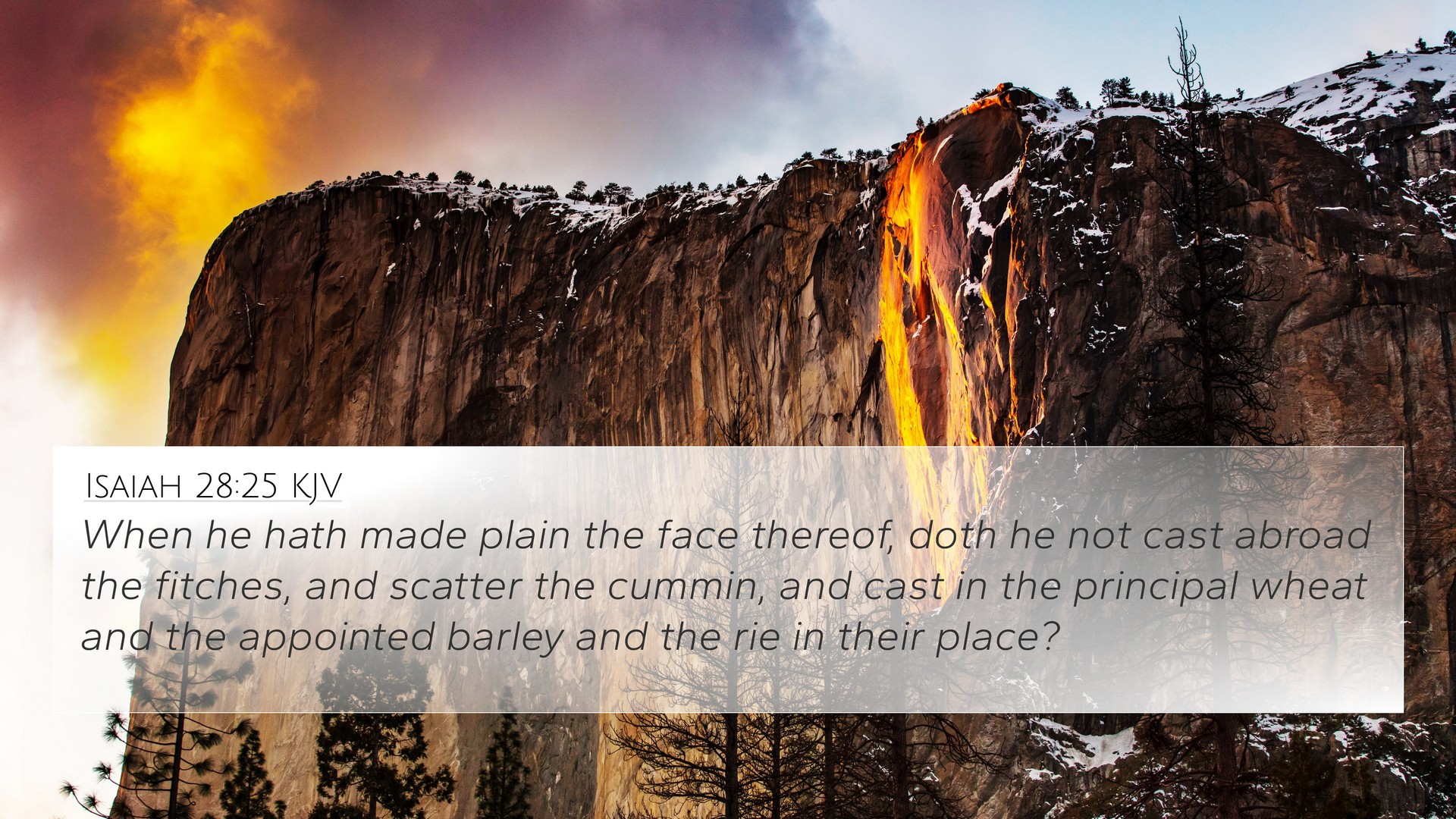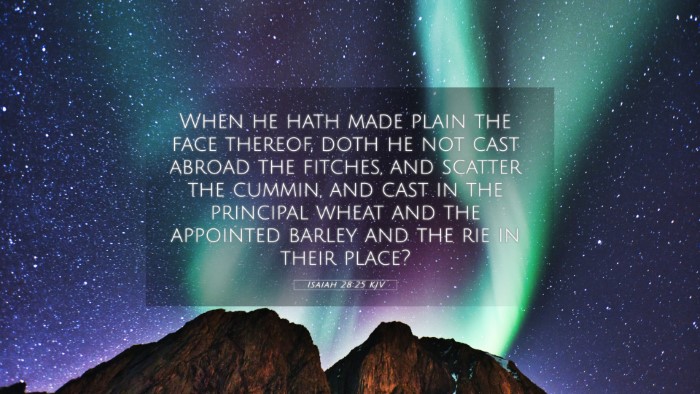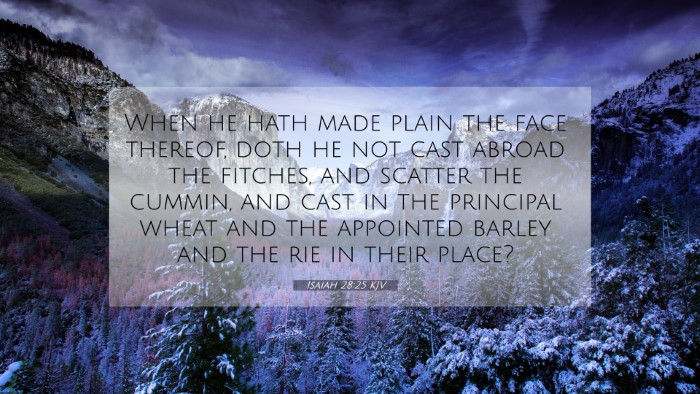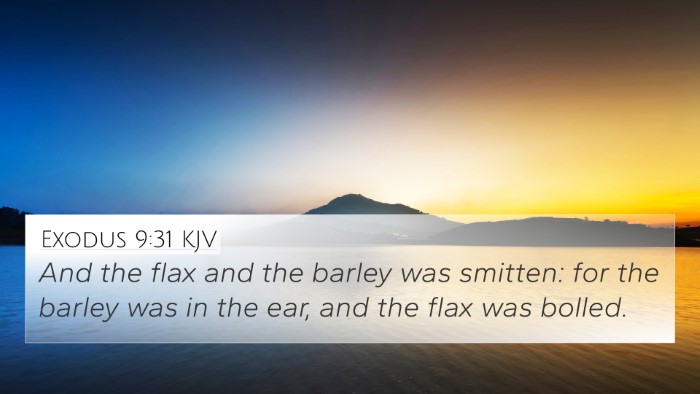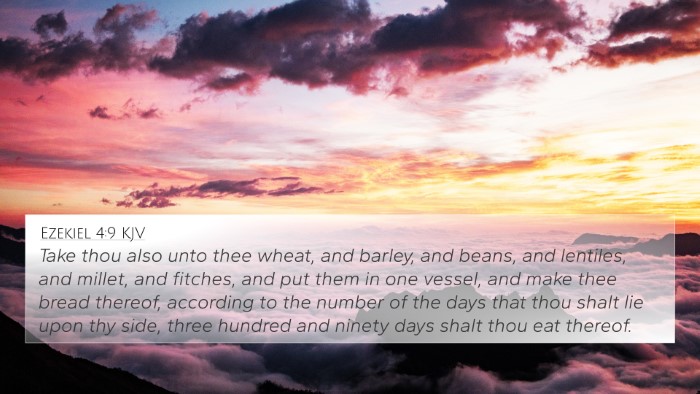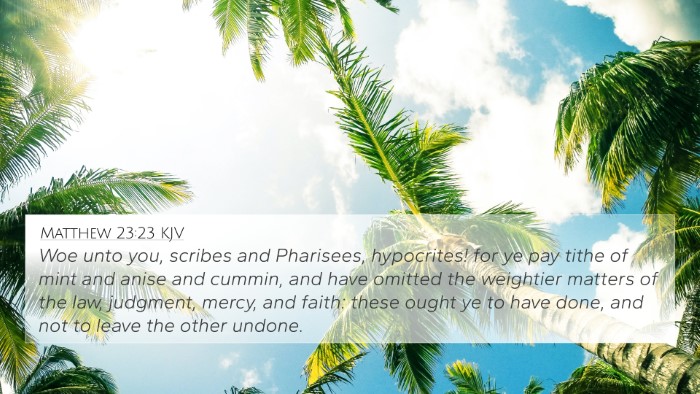Understanding Isaiah 28:25
Isaiah 28:25 states, "When he hath made plain the face thereof, doth he not cast abroad the fitches, and scatter the cummin, and cast in the principal wheat and the appointed barley and the rie in their place?" This verse utilizes agricultural imagery to elaborate on God's precision and order in His creation and providential workings.
Commentary Insights
Matthew Henry's Commentary: Henry emphasizes that the verse illustrates the wise and orderly way a farmer sows his seeds. Each type of seed has its specific place in the field, much like God's sovereign purpose in the world. The right seeds must be planted at the right time, demonstrating the principles of Divine order and the specific intentions that God has for His creation.
Albert Barnes' Notes: Barnes affirms the metaphor of planting and cultivating different seeds. He suggests that just as a farmer knows when and how to plant various seeds, so too does God direct the events of history skillfully. This highlights the theme of divine wisdom in the management of earthly affairs.
Adam Clarke's Commentary: Clarke discusses the cultural relevance of the crops mentioned in this verse, noting that fitches (or spelt) and cummin were common in the agricultural practices of the time. He suggests that the verse might imply that God’s plans, much like farming, are executed with knowledge, skill, and purpose. The inclusion of different types of grain underscores God’s provision and the variety in His creation.
Significance of the Verse
This verse, while simple in its agricultural illustration, carries profound implications regarding God's meticulous governance and providence. It connects to broader themes found throughout Scripture, where God’s order and wisdom are repeatedly affirmed.
Bible Verse Cross-References
- Genesis 1:11-12: God creates vegetation, emphasizing the orderliness of creation.
- Psalm 147:8: God provides for the earth, showing His care for creation.
- Proverbs 6:6-8: The ant teaches diligence and preparation, paralleling with agricultural practices.
- 1 Corinthians 9:10: Paul discusses the agricultural metaphor regarding spiritual labor and rewards.
- Matthew 13:3-9: The parable of the sower reflects similar agricultural themes presenting different responses to God’s word.
- Galatians 6:7-9: The principle of sowing and reaping illustrates consequences of actions, akin to agricultural laws.
- Hosea 10:12: Calls for sowing righteousness and reaping mercy, paralleling with Isaiah's agricultural metaphor.
- James 5:7: Reminds believers to be patient like farmers waiting for the harvest.
- Luke 8:15: Describes the good ground receiving the seed and producing fruit, similar to the careful agricultural practices mentioned.
- 2 Timothy 2:6: The hardworking farmer must be first to partake in the crops, reinforcing the need for diligence.
Thematic Connections
This verse contributes to the thematic and theological understanding of God’s sovereignty and providence throughout the Bible. Throughout the Old and New Testament, the analogy of agriculture is frequent, linking various scriptures and providing a framework for understanding spiritual truths:
- Order and Providence: God’s control over nature mirrors His control over human affairs.
- Intentionality in Creation: Each seed serves a purpose, illustrating divine intent in humanity’s design.
- Sowing and Reaping: The relationships between actions (sowing) and consequences (reaping) are key Biblical principles.
- Cultivation of Spiritual Life: The nurturing aspect of farming emphasizes the growth of faith within believers.
- Divine Timing: Just as crops grow at their appointed time, so too does God’s plan unfold at His chosen moments.
Tools for Bible Cross-Referencing
Understanding cross-references enhances Bible study and comprehension. Using tools for Bible cross-referencing can lead to a deeper understanding of connections between various scriptures. Here are some valuable resources:
- Bible Concordance: An index of words that allows users to locate verses based on keywords.
- Bible Cross-Reference Guide: Books or online resources providing connections between verses, aiding in thematic studies.
- Cross-reference Bible Study: Methodologies for studying scripture through links between passages.
- Comprehensive Bible Cross-reference Materials: Resources that aggregate various references to enrich understanding.
Conclusion
Isaiah 28:25, through its agricultural metaphor, demonstrates God's sovereign order and the purposeful nature of His creation. By employing tools and methods of Bible cross-referencing, readers can explore the rich tapestry of Scripture that connects and interrelates, providing a comprehensive understanding of Biblical themes and principles.
